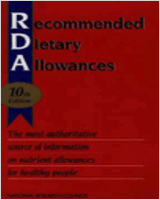From: 6, Protein and Amino Acids

NCBI Bookshelf. A service of the National Library of Medicine, National Institutes of Health.
| Growth | |||||||
|---|---|---|---|---|---|---|---|
| Age | Nitrogen Increment (mg/kg per day) b | Nitrogen Increment × 1.5 (mg/kg per day) c | Nitrogen Increment × 1.5, plus Correction for at 70% (mg/kg per day) d | Nitrogen Maintenance Level (mg/kg per day) e | Total Nitrogen (mg/kg per day) | Allowance of Reference Protein (g/kg per day) f | |
| Mean | + 2 SD g | ||||||
| Both sexes Months | |||||||
| 3–5.9 | 47 | 70 | 100 | 120 | 220 | 1.38 | 1.73 |
| 6–11.9 | 34 | 51 | 73 | 120 | 193 | 1.21 | 1.51 |
| Years | |||||||
| 1 | 16 | 25 | 36 | 119 | 155 | 0.97 | 1.21 |
| 5 | 9 | 13 | 19 | 116 | 135 | 0.84 | 1.05 |
| 9 | 8 | 12 | 17 | 111 | 128 | 0.80 | 1.00 |
| Males, years | |||||||
| 12 | 9 | 13 | 19 | 108 | 127 | 0.79 | 0.98 |
| 17 | 3 | 5 | 7 | 103 | 110 | 0.69 | 0.86 |
| Females, years | |||||||
| 12 | 7 | 10 | 14 | 108 | 122 | 0.76 | 0.95 |
| 17 | 0 | 0 | 0 | 103 | 103 | 0.64 | 0.80 |
From WHO (1985: Tables 32–34). These figures are examples of the derivation of requirements at various ages. For methodological details and a complete listing of ages, consult the WHO report.
Increment for growth.
50% Additional nitrogen increment to allow for daily variation in growth rate and inability to store amino acids to be available when maximum growth occurs.
Assuming a 70% efficiency of dietary protein utilization for growth.
Data from WHO (1985).
High-quality, highly digestible protein such as egg or milk. Protein is total nitrogen × 6.25.
Individual variability. The coefficient of variation for both maintenance and growth was assumed to be 12.5%.
From: 6, Protein and Amino Acids

NCBI Bookshelf. A service of the National Library of Medicine, National Institutes of Health.